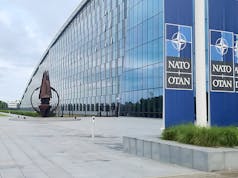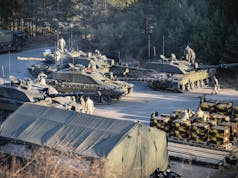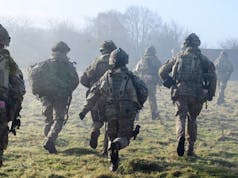10 days, 6 countries, covering 1,100 miles, 120 U.S. Army Strykers will convoy through Europe in a demonstration of solidarity with NATO allies and a show of strength to Russia.

When Russia invaded Crimea and Eastern Ukraine, it sent NATO into Cold War mode. The U.S. pledged $1 billion and an entire armored battalion to protect the Baltics, along with aerial assets and the thousands of associated personnel. With the new battalion came massive exercises along Russia’s border. Latvia, Estonia, Poland, Lithuania and the German Grafenwoehr Training Area were the sites in which Operation Atlantic Resolve took place. Operation Atlantic Resolve is a U.S. Army Europe-led land force assurance training mission to enhance multinational interoperability, to strengthen relationships among allied militaries, to contribute to regional stability, and to demonstrate U.S. commitment to NATO.
The U.S. sent 371 armored vehicles from the Ironhorse Brigade and the 3rd Squadron 2nd Cavalry Regiment directly to the Baltics, Poland, and Germany to reinforce NATO’s positions. This included M1A2 Abrams, M2 Bradleys, recovery vehicles, and variants of the Stryker wheeled vehicle.
The road march will be conducted by the 3rd Squadron 2nd Cavalry Regiment with 120 Strykers pooled from the training areas. The march has since been dubbed “The Dragoon Ride” commencing the 21st of March and ending the 1st of April. They will cover 6 countries on the 1,100 mile journey stopping off at different cities and towns each night and engage with locals, giving the troops a close look at who they are protecting. They will be accompanied by aerial reconnaissance support provided by the Army’s 12th Combat Aviation Brigade.
The General Dynamics Stryker 8 wheeled vehicle originated from the U.S. Army’s realization that it needed a strong, quick, and light reaction vehicle that could be sent into harm’s way with relative ease in the post Cold War world. The Stryker enables a brigade to deploy anywhere in the world within 96 hours, a division in 120 hours, and five divisions within 30 days. Operational mobility requirements dictated that the vehicle be transportable by C-130 aircraft and that it would be able to roll-off manned and ready to fight.
The standard and most prolific Stryker variant, the I.C.V. (Infantry Carrier Vehicle) has a crew of two and can carry up to 10 soldiers with armaments consisting of Protector M151 Remote Weapon Station with .50-cal M2 machine gun, 7.62 mm M240 machine gun, or an Mk-19 automatic grenade launcher. This includes an advanced digital battle management system that can track friendly elements of the force and hostiles.
In Iraq, they were used with great success in night raids, but did not fare well against the IED threat until additional modifications to the hull and armor were completed. Since then they have proven highly versatile, with many variants.
The most impressive feature of the Stryker is its ability to use roads to safely transport a massive amount of infantry across vast distances in a relatively efficient manner rather than transport them via rail which can be susceptible to strategic long range missile attacks. Something the M2 Bradley and M1A2 Abrams cannot do unless a massive resupply chain follows.













the world is at peace when we counterbalance the russian-chinese moves around the world.